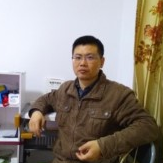Geographic Information Systems (GIS) and Water Resources Engineering toward Environmental Sustainability
A special issue of Water (ISSN 2073-4441). This special issue belongs to the section "New Sensors, New Technologies and Machine Learning in Water Sciences".
Deadline for manuscript submissions: closed (1 November 2022) | Viewed by 18388
Special Issue Editors
Interests: climate change; remote sensing; spatial analysis; statistical modeling; machine learning; urbanization; sustainable development; urban planning
Special Issues, Collections and Topics in MDPI journals
Interests: watershed; water environment simulation; watershed pollution control; climate change and watershed water security; SWAT; phosphorous; pollution source composition
Special Issue Information
Dear Colleagues,
Essentially, water resources sustain the functionality of ecosystems, which is particularly vital for the human-dominated ecosystem that faces the challenges of natural hazards (e.g., flooding and drought) and artificial results (e.g., water pollution, waterlogging). Therefore, managing water resources and associated risks urgently requires a wide range of practical tools and knowledge libraries to better understand the above-mentioned issues and respond promptly. Today, combined with both mature and newly emerging spatial models, geographic information systems (GIS) has been widely employed to depict the spatiotemporal patterns of water resources and related risks and evaluate the impacts of water resource engineering on natural and human-dominated ecosystems.
This Special Issue welcomes insightful manuscripts introducing novel theories and practical approaches for reconciling the conflict between operating water resource engineering projects and achieving environmental sustainability across a multiple scales. Further, looking beyond the narrow scope of water supply/distribution and drainage systems, the environmental consequences of water resource engineering systems, such as soil erosion, water stress, changes in surface heat flux and the urban heat island should be emphasized.
We hope that this Special Issue will serve as the platform for addressing the emerging issues and latest advances in this research domain and discussing the potential of new theories/methods for effective problem solving.
Dr. Hao Zhang
Dr. Xiaoying Yang
Guest Editors
Manuscript Submission Information
Manuscripts should be submitted online at www.mdpi.com by registering and logging in to this website. Once you are registered, click here to go to the submission form. Manuscripts can be submitted until the deadline. All submissions that pass pre-check are peer-reviewed. Accepted papers will be published continuously in the journal (as soon as accepted) and will be listed together on the special issue website. Research articles, review articles as well as short communications are invited. For planned papers, a title and short abstract (about 100 words) can be sent to the Editorial Office for announcement on this website.
Submitted manuscripts should not have been published previously, nor be under consideration for publication elsewhere (except conference proceedings papers). All manuscripts are thoroughly refereed through a single-blind peer-review process. A guide for authors and other relevant information for submission of manuscripts is available on the Instructions for Authors page. Water is an international peer-reviewed open access semimonthly journal published by MDPI.
Please visit the Instructions for Authors page before submitting a manuscript. The Article Processing Charge (APC) for publication in this open access journal is 2600 CHF (Swiss Francs). Submitted papers should be well formatted and use good English. Authors may use MDPI's English editing service prior to publication or during author revisions.
Keywords
- spatial analysis
- GIS modelling
- hydrological process
- water resource
- water resource engineering
- impact analysis
- natural hazard
- water pollution
- sustainability






